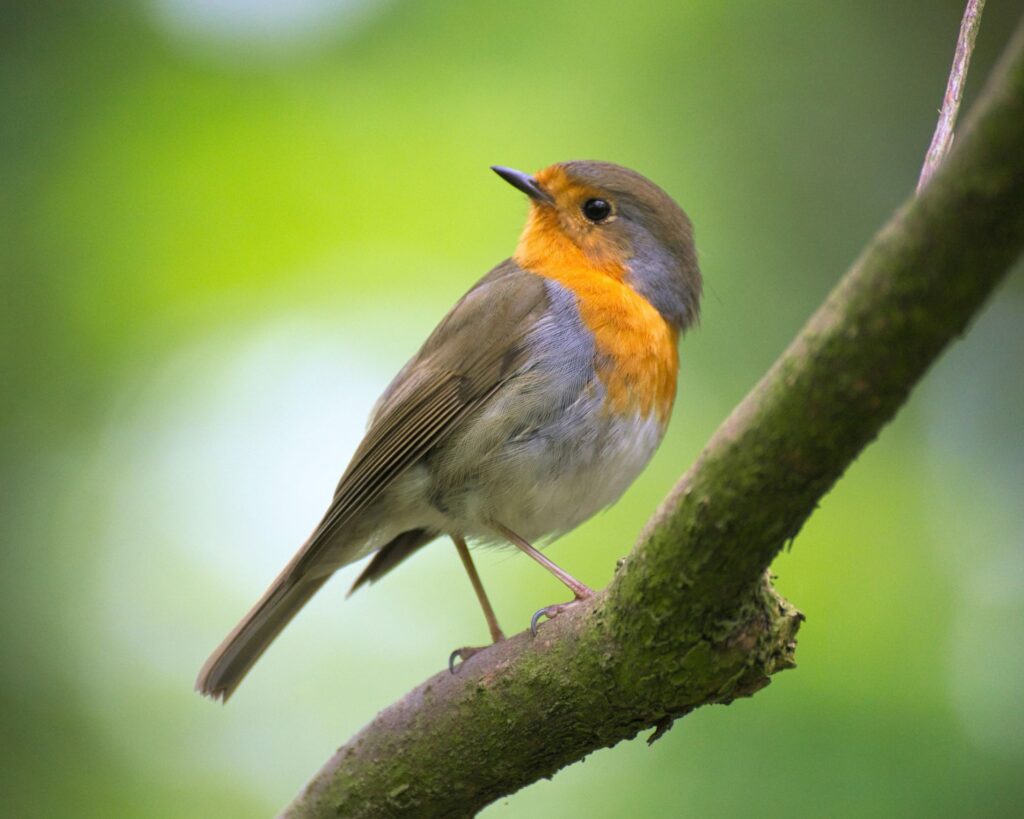Imagine this: you’re at home, and in walks a tiny, vibrant parakeet named Sky, a new addition to your family. From the moment Sky flutters into your life, you’re plunged into the fascinating world of bird communication. It’s like unlocking a secret language, one filled with subtle cues and vibrant sounds.

The Challenge Begins: Decoding Sky’s World
In the early days, Sky’s actions are a puzzle. Her energetic flapping, those curious head tilts, and her array of chirps throw you into a whirl of confusion. But here lies the heart of your journey – learning to interpret these signals is key to understanding her and forming a deeper bond.
Observation: The Path to Understanding
So, you start to watch Sky more attentively. You notice how she puffs up her feathers and squints her eyes. At first, you’re worried – is she sick? But no, as it turns out, this is Sky in her element, basking in comfort and relaxation.
The Expressive Tail
Sky’s tail is like a mood barometer. When she fans out her feathers, it’s a spectacle of excitement or balance as she navigates new spaces. A drooping tail, you learn, signals her worries or unease.
Feathers and Eyes: A Language of Their Own
Sky’s feathers, sleek against her body, are her alarm system, hinting at alertness or anxiety. Fluffed up, they signal her ease and safety. And then there’s eye pinning – those rapid changes in her pupil size are her way of showing intense focus or excitement.
The Symphony of Chirps and Squawks
Sky isn’t just a pretty face; her vocal talents are astonishing. Soft chirps often mean she’s happy and content, while loud squawks are her way of saying, “Hey, I need something!” – maybe food, maybe just a bit of your time.
Curiosity and Contentment: Head Tilts and Beak Grinding
The way Sky tilts her head, you’d think she’s pondering the mysteries of the universe. It’s her way of showing curiosity, trying to make sense of new sounds and sights. Come evening, as she grinds her beak, it’s a lullaby of contentment, signaling she’s ready to tuck in for the night.
Growing Together: Understanding and Responding
With each passing day, as you learn to read these signs, your connection with Sky deepens. You understand when she needs her space, when she’s up for a play, and how to be there for her through her moods. This isn’t just about coexisting; it’s about forming a bond that’s both profound and harmonious.
Embarking on a Deeper Dive: Beyond the Basics
As my journey with Sky progresses, new layers of understanding unfold. It’s like peeling back the layers of an onion, each revealing a more intricate aspect of avian communication.
The Subtlety of Feather Play
Beyond the obvious fluffing and sleeking, I notice the nuanced ways Sky uses her feathers. A slight ruffle might indicate mild irritation, while a quick shake often seems to be her way of resetting her mood.
Eyes: Windows to Sky’s Soul
I begin to pay closer attention to Sky’s eyes. A steady gaze can mean she’s assessing her environment or focusing on a particular object of interest. When her eyes narrow to slits, it’s often a sign of suspicion or discomfort.

The Complexity of Vocal Language
Sky’s range of sounds is not just about volume. The pitch, frequency, and even rhythm of her chirps and squawks have meanings. A series of rapid, high-pitched chirps could be her way of expressing excitement or joy, while a lower, more drawn-out call might be a sign of annoyance or impatience.
Interactive Communication: A Two-Way Street
It’s not just about understanding Sky; it’s also about how she learns to understand me. I notice she responds to my tone of voice and body language. A calm, gentle voice soothes her, while abrupt movements can cause alarm. We’re learning a shared language.
Mimicry: The Imitation Game
Sky starts to mimic some of the sounds she hears around the house. The beep of the microwave, the chime of a text message – she incorporates these into her own ‘vocabulary.’ It’s her way of connecting with her environment, and perhaps, a form of play.
Seasonal Changes in Behavior
As the seasons change, so does Sky. During spring, her energy levels and vocalizations increase, likely a nod to breeding instincts. Come winter, she’s more subdued and prefers cozy, quiet spots.
Health and Communication
I learn that changes in behavior can also indicate health issues. A sudden lack of vocalization or a change in eating habits prompts a visit to the vet. It’s crucial to understand these signs for Sky’s well-being.
A Conclusion of Mutual Understanding
Embarking on this journey with Sky isn’t just about learning bird body language; it’s a lesson in patience, observation, and empathy. It’s about seeing the world through her eyes and respecting her unique forms of expression. Your experience with Sky is more than just about birds; it’s a lesson in mindful communication.
Navigating the FAQs of Bird Body Language
- Is My Bird Happy? Look for relaxed feathers, gentle chirps, and playful behavior – these are signs of a content bird.
- Why the Wing Flapping? It could be excitement, a need for exercise, or a way to catch your attention.
- Beak Grinding – Should I Worry? Not at all! It’s a sign of relaxation and safety.
- How Do Birds Show Love? From gentle nibbles to mimicking your sounds or just wanting to be close – these are the ways they express affection.
Additional Resources for the Curious Minds If you’re keen to dive deeper, there’s a world of resources out there – books on avian behavior, expert advice from avian veterinarians, and insights from bird behaviorists.
About the Author: A Bird Whisperer’s Tale As a dedicated bird enthusiast and parakeet companion, I’ve spent years unraveling the mysteries of avian communication. My journey with Sky isn’t just personal; it’s a story I share to help others forge their paths to a loving, understanding relationship with their feathered friends.
As an Amazon Associate we earn from qualifying purchases through some links in our articles.




